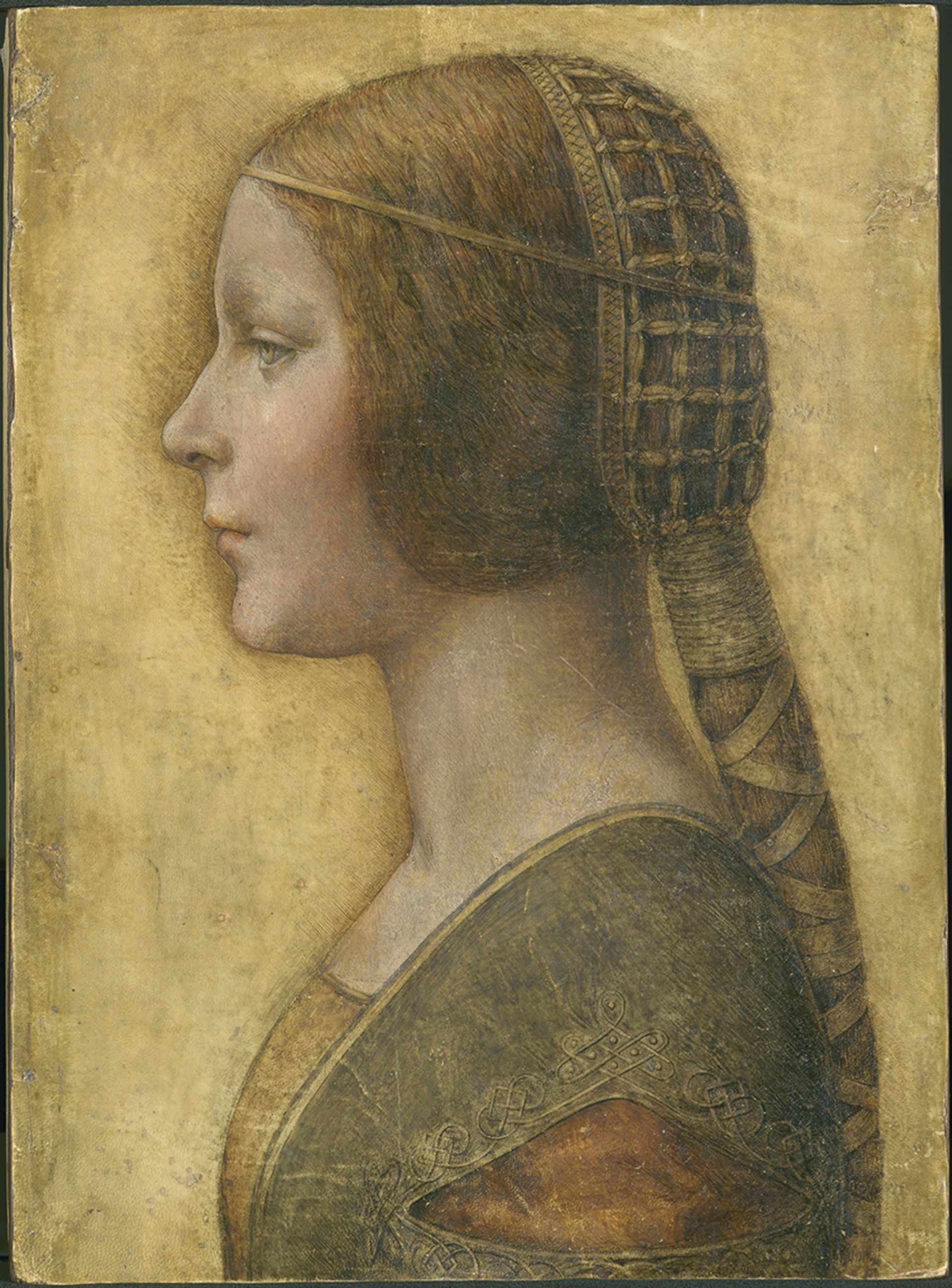15/07/2022 NFT twist is latest development in saga of contested ‘Leonardo’ painting hidden in a Swiss vault

NFT twist is latest development in saga of contested ‘Leonardo’ painting hidden in a Swiss vault
A painting of a princess possibly by the Old Master has been sold digitally—but questions remain over its provenance, the inherent value of non-fungible tokens and who owns what
What is the value of an original Leonardo Da Vinci masterwork? What about a “Leonardo” whose authenticity is disputed? And what if the work is also languishing in a Swiss vault, inaccessible to experts and the public, and the item on sale is actually a digital copy that has been purchased online and beamed onto a holographic screen encased in expensive crystal? Does it have any value at all?
To that last question, the art world has given us a resounding yes. Earlier this year, the pseudonymous collector @ModeratsArt bought a non-fungible token (NFT) of the purported da Vinci work La Bella Principessa. It is thought to depict Bianca Sforza, an illegitimate daughter of Ludovico Sforza, a member of the High Renaissance Milanese family, and cost more than $103,739 worth of the cryptocurrency ether via an auction on the NFT marketplace MakersPlace. @ModeratsArt declined to comment.
NFT or bust
A non-fungible token is a deed (NFT) that lives on a publicly owned ledger called a blockchain. It entitles the holder to bragging rights over an image associated with the deed, represented typically as a URL to wherever the image is stored online. In this case the NFT also entitles the holder, @ModeratsArt, to a crystal-encased physical rendering of the work.
Many digital copies of old works have been sold for large sums—in some cases the physical original has even been destroyed so as to transfer its “essence” to the copy—but this case is different. Although Holoverse and Scripta Maneant, the two companies behind the sale, described the NFT as the “first-ever verified Leonardo da Vinci NFT + HNFT [the crystal-encased physically displayed copy] on the market,” La Bella Principessa’s authenticity has crucially never been confirmed.
The painting was sold for $22,000 at a Christie’s auction in 1998 to an art dealer named Peter Silverman on behalf of an anonymous collector. Silverman encouraged efforts to support his strong conviction that the work was a long-lost Leonardo, resulting in a corroborating book by art historian Martin Kemp (La Bella Principessa: the Story of the New Masterpiece by Leonardo da Vinci, 2010). The notorious UK art forger Shaun Greenhalgh, who served a prison sentence between 2007 and 2010, also claimed to be the author of the work.
ThePrincipessa, however, has been kept under lock and key in a Swiss vault since 1998 and few have had the opportunity to analyse it. Advanced “multispectral” scans by prominent art specialist Pascal Cotte of French company Lumière Technologies uncovered a detail (said to be a fingerprint) in 2009 that he claimed linked the work to da Vinci but, again, nobody else has got a look in.
“Hardly anyone has seen the work in person. As such, there are few academic opinions about it and there has been only limited access to Pascal Cotte’s scans of it,” said Matthew Landrus, Supernumerary Fellow in History at Oxford University. This drawing can “only be truly understood in person”, he added. “You have to look at textures, chalk, ink, the vellum, aging, surface marks and incisions, etc.”
The work's ownership is also nebulous. Caitlin Cruickshank, who helped put the deal together for MakersPlace, toldTheArt Newspaperthat the anonymous owner of the physical original, represented by the Italian publisher Scripta Maneant, was involved with the project and gave the “necessary authorisations.” She adds, however, that the NFT itself was minted and initially owned by Holoverse, the digital art company behind the sale. The NFT was then moved directly into the account of the purchaser. Cruickshank would not say whether the NFT was based on Cotte’s multispectral scan though she did remark that MakersPlace was in talks with Cotte on “future projects as well”.
Craig Palmer, the CEO of MakersPlace, told us that the contentious history of the painting only adds to the NFT’s appeal, suggesting that this allows the principal players to benefit from the enigma of the original without exposing it to researchers. Palmer added that, as per its terms and conditions, MakersPlace has taken 15% of the proceeds.
It is hard to say, however, whether it is right to describe the NFT as “verified,” as Holoverse did in marketing materials. Cruickshank argues that the involvement of the owner in the deal, along with Kemp’s detailed analyses and her own hunch—she is a former Old Masters expert at Sotheby’s—was justification enough (Holoverse et al were indeed able to “verify” that there was, somewhere, a physical original of the work, no matter whether it was actually a Leonardo).
This rather fast and loose understanding of verification is familiar in the blockchain world, and recalls attempts by Walmart, in 2019, to “verify” the provenance of its romaine lettuces via the Ethereum network. The basic concept was that a farmer would slap a QR code on a lettuce, which would be rescanned at every juncture of the supply chain until it reached the supermarket. Consumers could then “confirm” the fair-trade provenance with their phones.
But as withLa Bella Principessa, confirmation of an item’s “provenance” is irrelevant if the physical original’s authenticity is disputed. The nebulous “blockchain” offers no way of proving whether a farmer’s produce truly is fair trade, nor whether a work likeLa Bella Principessais the genuine article.
As software engineers say about the “human” element of the inputting process: garbage in, garbage out.
 (0)
(0)
 (0)
(0)
